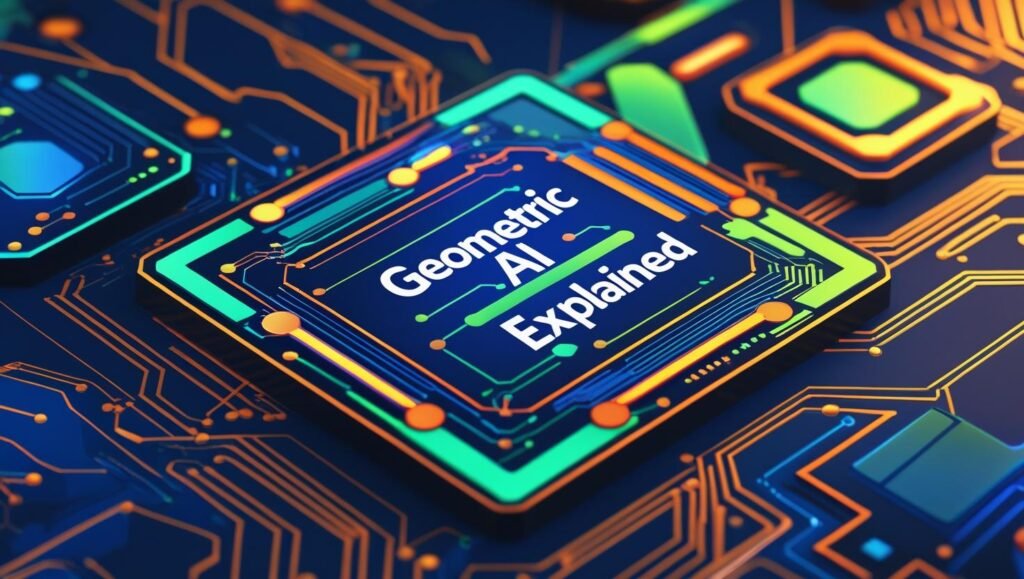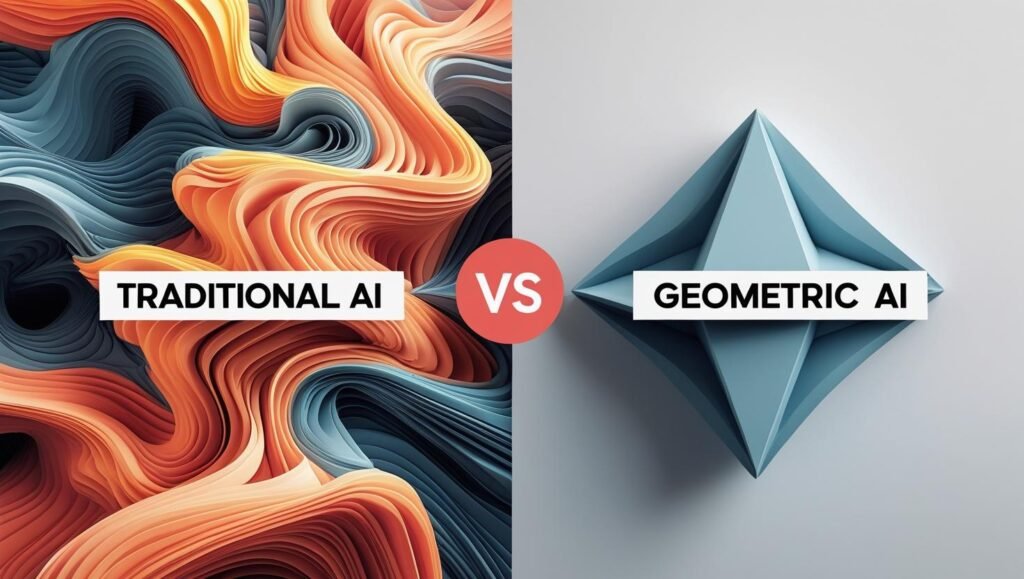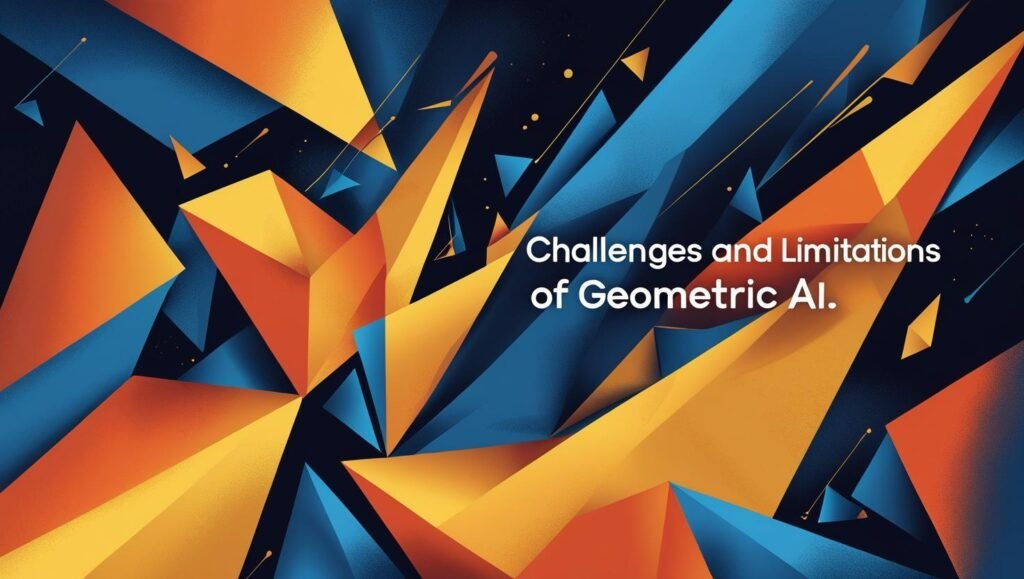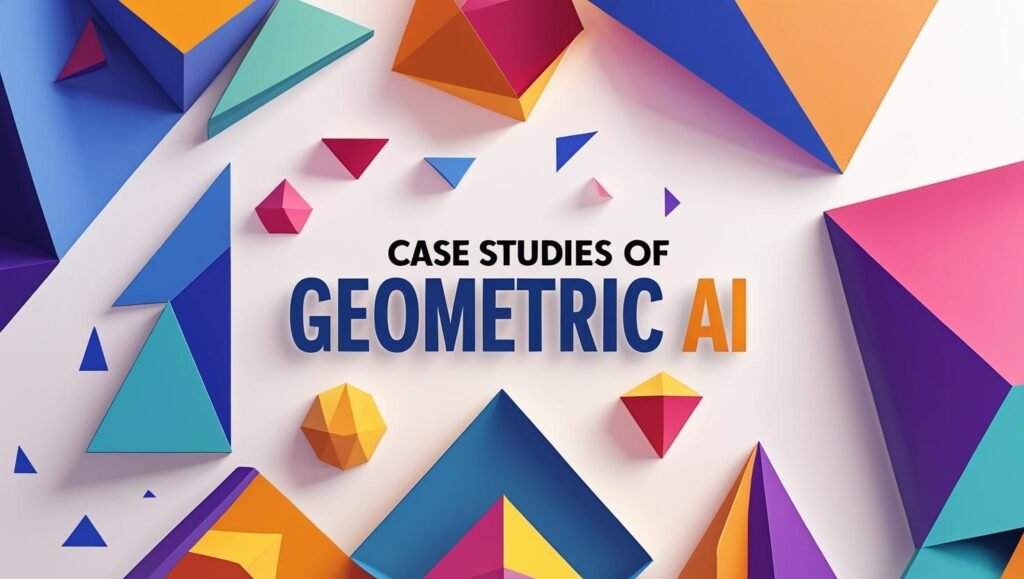Geometric AI Explained: How Geometry is Shaping the Next Era of Artificial Intelligence

In the rapidly evolving landscape of artificial intelligence, geometric AI emerges as a surprisingly pivotal player. While we often associate AI with algorithms and data, the underlying principles of geometry are transforming how machines perceive, understand, and interact with the world.
From computer vision that enables self-driving cars to navigate complex environments, to the foundational frameworks that empower deep learning models, geometric AI is redefining possibilities. This article delves into the intersection of geometry and AI, exploring how geometric concepts are shaping innovations in machine learning and providing a fresh perspective on data interpretation.
As we embark on this journey, you’ll discover how the elegance of shapes and structures is paving the way for the next era of intelligent systems, making technology smarter, more intuitive, and remarkably efficient. Prepare to see AI through a geometric lens, where the rules of space and form unlock unprecedented advancements.
The Role of Geometry in Artificial Intelligence
In the realm of artificial intelligence, geometry plays a crucial yet often underappreciated role. At its core, geometry deals with shapes, sizes, and the properties of space, which are foundational to understanding and representing the physical world. When integrated into AI systems, geometric principles enable machines to interpret and manipulate spatial data effectively. This capability is essential for tasks such as object recognition, scene reconstruction, and spatial reasoning, which are integral to various AI applications, including robotics, computer vision, and augmented reality.
One of the primary ways geometry influences AI is through the concept of geometric transformations. These transformations, such as translation, rotation, scaling, and reflection, allow AI systems to understand how objects can move and change within a space. By leveraging geometric transformations, AI models can recognize objects from different angles and perspectives, enhancing their ability to accurately identify and interact with their environment. This is particularly important for autonomous systems like self-driving cars, which must navigate complex and dynamic environments safely.
Furthermore, geometry aids in the representation and analysis of high-dimensional data, which is a common challenge in machine learning. Techniques such as principal component analysis (PCA) and t-distributed stochastic neighbor embedding (t-SNE) utilize geometric concepts to reduce the dimensionality of data while preserving its essential structure. This dimensionality reduction facilitates more efficient data processing and visualization, enabling AI models to uncover patterns and relationships that might otherwise remain hidden in high-dimensional spaces. As a result, geometry not only enhances the interpretability of AI systems but also improves their performance and scalability.
Key Concepts

To fully appreciate the impact of geometry on artificial intelligence, it’s essential to understand some key concepts that underpin geometric approaches in AI. One such concept is the notion of geometric representations, which involve encoding spatial information in a way that machines can process and interpret. These representations often take the form of geometric primitives, such as points, lines, polygons, and meshes, which serve as the building blocks for more complex structures. By utilizing geometric representations, AI systems can model and analyze the spatial relationships between objects, facilitating tasks like 3D reconstruction and scene understanding.
Another fundamental concept is the idea of geometric learning, which involves training AI models to recognize and manipulate geometric patterns. Geometric learning algorithms often rely on techniques from computational geometry, such as Voronoi diagrams, Delaunay triangulations, and convex hulls, to analyze spatial data. These algorithms enable AI systems to perform tasks like clustering, classification, and optimization with a geometric perspective, leading to more accurate and efficient solutions. For instance, in computer vision, geometric learning can enhance object detection and segmentation by leveraging the spatial coherence of pixels and edges.
A third key concept is the application of geometric deep learning, which extends traditional deep learning techniques to non-Euclidean domains, such as graphs and manifolds. Geometric deep learning leverages the intrinsic geometric structure of data to improve the performance of neural networks on tasks like graph classification, node embedding, and point cloud processing. This approach has gained significant traction in recent years, with advancements in graph convolutional networks (GCNs), graph attention networks (GATs), and other geometric neural architectures. By incorporating geometric insights into deep learning, researchers are pushing the boundaries of what AI systems can achieve in fields like social network analysis, molecular biology, and 3D vision.
Applications of Geometric AI in Various Industries
Geometric AI’s versatility and effectiveness have led to its adoption across a wide range of industries, each leveraging geometric principles to solve domain-specific challenges. One prominent application is in the field of autonomous vehicles, where it plays a pivotal role in enabling self-driving cars to navigate safely. Through techniques like 3D mapping, LiDAR data processing, and sensor fusion, it helps autonomous systems interpret their surroundings, detect obstacles, and make real-time driving decisions. By accurately modeling the spatial environment, these systems can optimize routes, avoid collisions, and improve overall driving efficiency.
In the healthcare sector, geometric AI is transforming medical imaging and diagnostics. Techniques such as shape analysis, image registration, and 3D reconstruction allow AI systems to analyze complex anatomical structures with high precision. For example, it can assist radiologists in detecting tumors, segmenting organs, and planning surgeries by providing detailed and accurate visualizations of medical scans. Additionally, it is being used to model biological processes and simulate physiological phenomena, contributing to advancements in personalized medicine and treatment planning.
The entertainment industry also benefits from geometric AI, particularly in areas like computer graphics, animation, and virtual reality. By leveraging geometric principles, AI systems can generate realistic 3D models, animate characters, and create immersive virtual environments. Techniques such as mesh deformation, skeletal animation, and inverse kinematics enable the creation of lifelike animations and interactive experiences. In gaming, it enhances the realism and interactivity of virtual worlds, providing players with more engaging and dynamic experiences. Moreover, it is used in film production to create special effects and digital doubles, pushing the boundaries of visual storytelling.
Comparing Traditional AI with Geometric AI

Traditional AI and geometric AI differ in several key aspects, particularly in how they represent and process data. Traditional AI approaches often rely on symbolic representations and statistical methods to analyze data and make decisions. These methods typically involve numerical computations and logical reasoning, which are well-suited for tasks like natural language processing, expert systems, and game playing. However, traditional AI can struggle with tasks that require an understanding of spatial relationships and geometric structures, such as object recognition and 3D reconstruction.
In contrast, geometric AI emphasizes the representation and manipulation of spatial data through geometric principles. By leveraging geometric transformations and spatial relationships, geometric AI can model the physical world more accurately and intuitively. This approach allows AI systems to handle tasks that involve complex spatial reasoning and 3D geometry, such as autonomous navigation and medical imaging. Additionally, geometric AI often integrates techniques from computational geometry and computer graphics, enabling more sophisticated and efficient data processing.
Another key difference lies in the types of learning algorithms used. Traditional AI often relies on statistical learning methods, such as linear regression, decision trees, and support vector machines, which are designed to find patterns in numerical data. While these methods can be effective for many applications, they may not fully capture the geometric structure of data. Geometric AI, on the other hand, employs geometric learning algorithms that are specifically designed to analyze spatial data. These algorithms can leverage the inherent geometric properties of data to improve accuracy and performance, particularly in tasks involving high-dimensional and non-Euclidean spaces.
Despite these differences, traditional AI and geometric AI are not mutually exclusive; rather, they complement each other in various ways. By combining the strengths of both approaches, researchers can develop more robust and versatile AI systems. For instance, integrating geometric insights into traditional neural networks can enhance their ability to process spatial data, leading to more accurate and efficient models. Similarly, incorporating statistical methods into geometric AI can improve the generalization and scalability of geometric learning algorithms. This synergy between traditional AI and geometric AI holds great promise for advancing the field of artificial intelligence.
Benefits of Using Geometric AI
The adoption of geometric approaches in AI offers numerous benefits, enhancing the capabilities and performance of intelligent systems. One of the primary advantages is improved accuracy in tasks involving spatial reasoning and object recognition. By leveraging geometric representations and transformations, AI systems can better understand the spatial relationships between objects, leading to more precise and reliable results. This accuracy is particularly important in applications like autonomous driving, where even small errors can have significant consequences.
Another benefit is its ability to handle high-dimensional and complex data more effectively. Traditional AI methods often struggle with the curse of dimensionality, where the performance of algorithms degrades as the number of dimensions increases. Geometric AI addresses this challenge by using techniques like dimensionality reduction and manifold learning to simplify and visualize high-dimensional data. These techniques preserve the essential structure and relationships within the data, enabling more efficient processing and analysis. As a result, it can uncover patterns and insights that might be missed by traditional methods.
Geometric AI also enhances the interpretability and explainability of AI models. By representing data in geometric terms, such as points, lines, and surfaces, it provides a more intuitive and visual understanding of how models make decisions. This interpretability is crucial for applications where transparency and trust are essential, such as healthcare and finance. For example, in medical imaging, it can visualize the spatial relationships between anatomical structures, helping doctors understand and validate AI-generated diagnoses. Similarly, in finance, geometric AI can illustrate the relationships between different financial assets, aiding in risk assessment and portfolio management.
Additionally, geometric AI promotes innovation and creativity by providing new ways to represent and interact with data. Techniques from computational geometry and computer graphics can be used to generate realistic 3D models, simulate physical phenomena, and create immersive virtual environments. These capabilities open up new possibilities for applications in entertainment, education, and design. For instance, it can be used to create interactive educational tools that visualize complex scientific concepts, making learning more engaging and accessible. In design, it can assist in creating aesthetically pleasing and functional products by optimizing shapes and structures.
Challenges and Limitations

Despite its many benefits, geometric AI also faces several challenges and limitations that must be addressed. One of the primary challenges is the computational complexity of geometric algorithms. Many geometric techniques, such as 3D reconstruction and mesh processing, involve intensive computations that can be time-consuming and resource-demanding. This complexity can limit the scalability of geometric AI systems, particularly when dealing with large datasets or real-time applications. Researchers are continually exploring ways to optimize geometric algorithms and leverage parallel computing to overcome these computational challenges.
Another limitation is the difficulty in acquiring high-quality spatial data. Accurate geometric representations often require precise measurements and detailed data, which can be challenging to obtain. For example, in medical imaging, obtaining high-resolution 3D scans can be expensive and time-consuming. Similarly, in autonomous driving, capturing accurate LiDAR data requires sophisticated sensors and extensive data collection efforts. The quality and availability of spatial data can significantly impact the performance of geometric AI systems, making data acquisition a critical consideration.
Geometric AI also faces challenges related to robustness and generalization. While geometric techniques can excel in specific tasks and environments, they may struggle to generalize across different contexts and scenarios. For instance, a geometric system trained for object recognition in indoor environments may not perform well in outdoor settings with varying lighting conditions and occlusions. Ensuring the robustness and adaptability of geometric models requires extensive training data and rigorous testing across diverse conditions. Additionally, developing techniques to handle uncertainties and variations in spatial data is an ongoing area of research.
Furthermore, integrating geometric AI with other AI approaches poses its own set of challenges. Combining geometric insights with traditional machine learning and deep learning methods requires careful consideration of how different representations and algorithms interact. Ensuring compatibility and coherence between geometric and non-geometric components is essential for building effective hybrid AI systems. Researchers are exploring various strategies to achieve seamless integration, such as designing neural networks that can process both geometric and non-geometric data and developing frameworks that facilitate the fusion of different AI techniques.
What lies ahead
The future of geometric AI holds exciting possibilities and advancements that promise to further revolutionize the field of artificial intelligence. One prominent trend is the continued development of geometric deep learning, which combines the power of deep learning with the principles of geometry. Researchers are exploring new neural architectures and algorithms that can effectively process and learn from geometric data, such as point clouds, graphs, and manifolds. These advancements are expected to enhance the performance of AI systems in tasks like 3D object recognition, graph classification, and molecular modeling.
Another emerging trend is the integration of geometric AI with other cutting-edge technologies, such as augmented reality (AR) and virtual reality (VR). By leveraging geometric principles, AI systems can create more realistic and interactive AR and VR experiences. For example, it can enable precise tracking and mapping of physical environments, allowing virtual objects to seamlessly interact with the real world. This integration has the potential to transform industries like gaming, education, and healthcare by providing immersive and intuitive experiences that enhance learning, training, and entertainment.
The use of geometric AI in robotics is also expected to grow significantly in the coming years. It can enhance the perception, navigation, and manipulation capabilities of robots, enabling them to perform complex tasks in dynamic environments. For instance, geometric AI can improve the ability of robots to recognize and interact with objects, navigate through cluttered spaces, and collaborate with humans. As advancements in sensor technology and computational power continue, geometric AI will play a crucial role in the development of more intelligent and autonomous robotic systems.
Additionally, researchers are exploring the potential of geometric AI in scientific discovery and research. By modeling and analyzing the geometric structures of molecules, proteins, and other biological entities, geometric AI can contribute to advancements in fields like drug discovery and genomics. For example, it can assist in predicting the 3D structures of proteins and identifying potential drug targets, accelerating the development of new therapeutics. In physics and astronomy, it can be used to analyze complex spatial data, such as the distribution of galaxies and the structure of the universe, providing new insights into fundamental scientific questions.
Case Studies:

The successful implementation of geometric AI across various domains highlights its transformative potential and practical impact. One notable case study is the use of geometric AI in autonomous driving. Companies like Waymo and Tesla have integrated geometric AI techniques, such as 3D mapping and sensor fusion, to develop self-driving cars that can navigate complex urban environments. By accurately modeling the spatial surroundings and detecting obstacles, these autonomous systems can make real-time driving decisions, enhancing safety and efficiency. The success of these implementations demonstrates the critical role of geometric AI in advancing autonomous transportation.
In the healthcare industry, geometric AI has been successfully applied to medical imaging and diagnostics. For example, researchers have developed AI systems that use geometric techniques to analyze 3D medical scans and detect abnormalities, such as tumors and lesions. One case study involves the use of geometric AI to improve the accuracy of breast cancer detection in mammograms. By leveraging shape analysis and image registration, the AI system can identify suspicious regions with high precision, assisting radiologists in early diagnosis and treatment planning. This application of geometric AI has the potential to save lives by enabling more accurate and timely medical diagnoses.
The entertainment industry has also seen successful implementations of geometric AI, particularly in computer graphics and animation. For instance, Pixar Animation Studios has utilized geometric AI techniques to create lifelike characters and realistic animations in films like “Toy Story” and “Finding Nemo.” By employing methods such as mesh deformation and skeletal animation, the animators can bring characters to life with natural movements and expressions. Additionally, it has been used to generate special effects and digital doubles in blockbuster movies, enhancing the visual storytelling and overall cinematic experience.
Conclusion:
As we have explored throughout this article, geometry is playing a transformative role in shaping the future of artificial intelligence. By integrating geometric principles into AI systems, researchers and engineers are unlocking new capabilities and pushing the boundaries of what intelligent machines can achieve. From enhancing the accuracy of object recognition and spatial reasoning to enabling innovative applications in autonomous driving, healthcare, entertainment, and environmental conservation, geometric AI is driving significant advancements across various industries.
The synergy between traditional AI and geometric AI offers exciting opportunities for developing more robust, versatile, and efficient intelligent systems. By combining the strengths of both approaches, researchers can create AI models that excel in handling complex spatial data and performing tasks that require a deep understanding of geometric structures. This integration is paving the way for new breakthroughs in fields like robotics, augmented reality, and scientific discovery, where the interplay between geometry and AI holds immense potential.
In conclusion, the intersection of geometry and artificial intelligence is ushering in a new era of intelligent systems that are smarter, more intuitive, and remarkably efficient. By viewing AI through a geometric lens, we gain a deeper appreciation for the elegance and power of shapes and structures in driving innovation and solving real-world challenges. As we continue to explore and harness the potential of geometric AI, we can look forward to a future where intelligent machines seamlessly interact with the physical world, making technology more accessible and impactful for all.
For the latest insights and updates, be sure to explore our AI Trends & News and stay ahead in the world of artificial intelligence.
